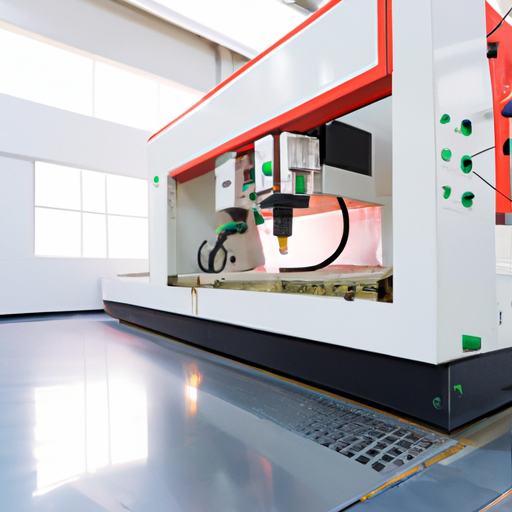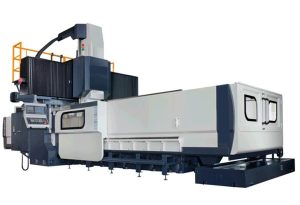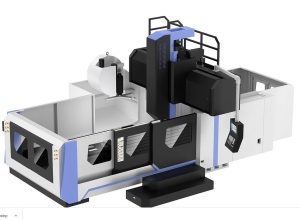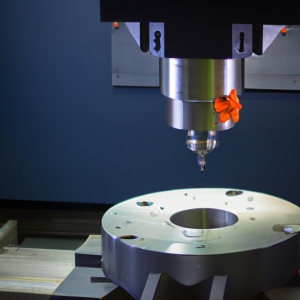Comparing 5 Axis Milling Heads and 3 Axis Milling Heads by Weish: A Comprehensive Overview
At Weish, a leading CNC machine manufacturer, we understand the importance of choosing the right milling head for your machining needs. The decision between a 5-axis and a 3-axis milling head can significantly impact your production capabilities, efficiency, and precision. In this article, we provide a comprehensive comparison of 5-axis milling heads and 3-axis milling heads, highlighting the key differences, advantages, and applications of each.
Understanding the Basics: 5 Axis vs. 3 Axis Milling Heads
What is a 3 Axis Milling Head?
A 3-axis milling head allows the cutting tool to move in three linear axes: X, Y, and Z. This configuration is standard in many CNC machines and is suitable for a wide range of machining tasks. The 3-axis milling head is ideal for producing simple to moderately complex parts, where the tool can efficiently perform operations like drilling, milling, and tapping along three axes.
What is a 5 Axis Milling Head?
A 5-axis milling head, on the other hand, enables the cutting tool to move in five different axes simultaneously: X, Y, Z, and two rotational axes (A and B). This capability allows for greater flexibility and the ability to machine complex geometries with fewer setups. The 5-axis milling head is particularly beneficial for industries that require intricate parts with multiple angles and complex surfaces, such as aerospace, automotive, and medical devices.

Key Differences Between 5 Axis and 3 Axis Milling Heads
Range of Motion and Flexibility
One of the most significant differences between 5-axis and 3-axis milling heads is the range of motion. The 3-axis milling head is limited to linear movements along the X, Y, and Z axes, which can restrict its ability to machine complex parts. In contrast, the 5-axis milling head’s additional rotational axes provide enhanced flexibility, allowing the tool to approach the workpiece from various angles. This capability reduces the need for multiple setups and improves the efficiency of machining complex shapes.
Complexity of Machining Operations
The 3-axis milling head is well-suited for tasks that involve machining flat surfaces, drilling holes, and performing basic contouring. However, when it comes to complex geometries that require machining on multiple planes or intricate curves, the 5-axis milling head excels. With the ability to rotate and tilt the cutting tool, the 5-axis head can easily handle undercuts, deep cavities, and other challenging features that would be difficult or impossible to achieve with a 3-axis head.
Setup Time and Efficiency
Another critical difference is the setup time required for machining operations. With a 3-axis milling head, complex parts often require multiple setups and repositioning of the workpiece to achieve the desired features. This process can be time-consuming and increases the risk of errors. In contrast, the 5-axis milling head allows for more efficient machining by reducing the need for multiple setups. The ability to machine all sides of a part in a single setup not only saves time but also improves accuracy and consistency.
Advantages of 5 Axis Milling Heads
Enhanced Precision and Surface Finish
The 5-axis milling head offers superior precision and surface finish compared to a 3-axis head. The ability to position the tool closer to the surface being machined and adjust the angle of approach minimizes tool deflection and improves the overall quality of the machined part. This is particularly important for industries that require high-precision components with tight tolerances and excellent surface finishes.
Greater Versatility and Capability
The versatility of a 5-axis milling head makes it the preferred choice for industries that require the production of complex, high-value parts. From aerospace components with intricate aerodynamic surfaces to medical implants with organic shapes, the 5-axis milling head can handle a wide range of applications that demand precision and complexity. This versatility also allows manufacturers to take on more diverse projects, increasing their competitive edge.
When to Choose a 3 Axis Milling Head
Cost-Effectiveness for Simpler Parts
For manufacturers who primarily produce simpler parts with flat surfaces or less complex geometries, a 3-axis milling head can be a more cost-effective solution. The 3-axis head is generally less expensive to purchase and maintain, making it an ideal choice for businesses that do not require the advanced capabilities of a 5-axis head. Additionally, the 3-axis milling head can still deliver excellent results for many applications, particularly when precision and complexity are not the primary concerns.
Ease of Use and Programming
The 3-axis milling head is typically easier to program and operate compared to a 5-axis head. For machinists and programmers who are more familiar with 3-axis operations, the learning curve for 5-axis programming can be steep. In such cases, sticking with a 3-axis milling head can streamline the production process and reduce the need for extensive training or complex programming.
Weish’s Commitment to Quality and Innovation
Advanced CNC Technology for All Needs
At Weish, we are committed to providing our clients with the best CNC machining solutions, whether they require the precision and versatility of a 5-axis milling head or the reliability and cost-effectiveness of a 3-axis head. Our advanced CNC technology and expertise allow us to tailor our products to meet the specific needs of each client, ensuring optimal performance and value.
Customer Support and Service
Weish understands that choosing the right milling head is a critical decision that impacts the success of your manufacturing operations. That’s why we offer comprehensive customer support and service to help you make the best choice for your needs. From initial consultation to ongoing maintenance, Weish is dedicated to ensuring that our clients receive the highest level of service and support.
Conclusion
The choice between a 5-axis and a 3-axis milling head depends on the complexity, precision, and efficiency requirements of your machining operations. While the 3-axis milling head offers cost-effectiveness and ease of use for simpler parts, the 5-axis milling head provides enhanced versatility, precision, and efficiency for more complex and high-value applications. At Weish, a leading CNC machine manufacturer, we are committed to delivering top-quality milling heads and machining solutions that meet the diverse needs of our clients, helping them achieve success in their manufacturing endeavors.





